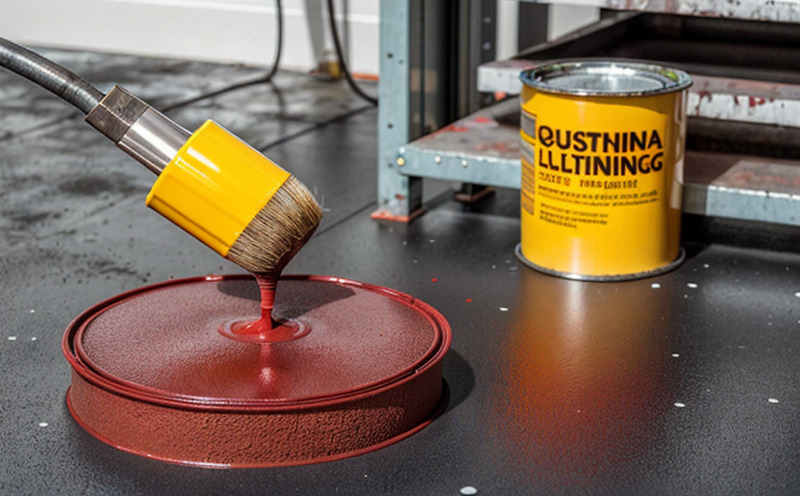ISO 9227 Salt Spray Corrosion Testing of Coatings
The ISO 9227 salt spray test is a critical method used to evaluate the corrosion resistance of coatings, paints, and other surface treatments in industrial manufacturing. This standardized procedure simulates the corrosive effects of salt-laden atmospheres that can be encountered in various environments such as coastal areas or industrial settings.
Understanding this test requires knowledge of its background, purpose, and how it is conducted. The ISO 9227 standard specifies a chamber with controlled humidity and temperature conditions where specimens are exposed to a corrosive salt spray for a predetermined time period. This exposure mimics the environmental stress that coatings might face in real-world applications.
The test results provide valuable insights into the performance of different materials under corrosive conditions, which is essential for ensuring product quality and reliability. For instance, manufacturers can use this data to improve their formulations or select more durable coating systems. The test is widely used across various sectors including automotive, aerospace, marine, and construction.
The process involves several key steps:
- Preparation of the specimen
- Setting up the salt spray chamber
- Exposure to corrosive conditions for a specified duration
- Evaluation of changes in appearance and structural integrity post-exposure
The test results are typically reported based on visual inspection, mass loss measurements, or other relevant parameters. This information is crucial for compliance with industry standards and can influence the design and formulation decisions of industrial coatings.
| Parameter | Value | Description |
|---|---|---|
| Chamber Humidity | ≥93% | Ensures high humidity levels to facilitate corrosion. |
| Salt Solution Concentration | 5% NaCl, 20 g/L | Standard salt solution concentration for the test. |
| Test Duration | Specimen Type | Evaluation Criteria |
|---|---|---|
| 100 hours | Ceramic Coating | Visual inspection for pitting and mass loss. |
| 240 hours | Metallic Paint | Evaluation of adhesion strength and color change. |
The ISO 9227 test is a cornerstone in the quality assurance process for industrial coatings. It helps manufacturers ensure that their products meet stringent industry standards, thereby enhancing customer satisfaction and market competitiveness.
Scope and Methodology
This section provides an overview of the scope and methodology used in conducting ISO 9227 salt spray corrosion testing. The test is designed to evaluate the resistance of coatings, paints, and surface finishes to corrosive environments.
| Parameter | Description |
|---|---|
| Chamber Type | Salt Spray Chamber |
| Temperature Range | 35°C ± 2°C |
| Humidity Level | ≥93% |
| Parameter | Description |
|---|---|
| Salt Solution Type | 5% Sodium Chloride (NaCl) |
| Flow Rate | ~2.3 L/min |
The methodology involves preparing the specimens, setting up the chamber with controlled conditions, and exposing the specimens to salt spray for a specified duration. After the exposure period, the specimens are evaluated based on visual inspection, mass loss measurements, or other relevant parameters.
Why Choose This Test
Selecting ISO 9227 salt spray corrosion testing is crucial for several reasons:
- Compliance with Industry Standards: Many industries have specific requirements that must be met to ensure product quality and safety.
- Enhanced Product Reliability: By identifying weaknesses early in the development process, manufacturers can improve their products' durability and longevity.
- Risk Management: This test helps identify potential corrosion issues before they become critical problems during production or use.
- Cost Efficiency: Early identification of coating failures can save significant costs associated with product recalls and warranty claims.
The ISO 9227 test is particularly beneficial for industries where environmental exposure is a significant concern. It provides valuable data that can be used to improve product design, enhance manufacturing processes, and ensure regulatory compliance.
Quality and Reliability Assurance
- Regular Calibration: Ensures accurate measurement of test parameters such as temperature, humidity, and salt concentration.
- Data Validation: Multiple evaluations to ensure consistent results across different tests.
- Training Programs: Regular training for staff involved in the testing process to maintain expertise and adherence to standards.
We adhere strictly to ISO, ASTM, EN, IEC standards ensuring our procedures meet international benchmarks. This commitment guarantees accurate, reliable results that are trusted by industry leaders worldwide.





